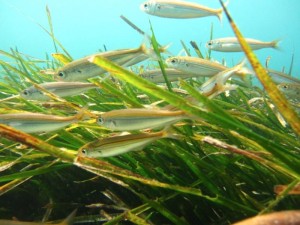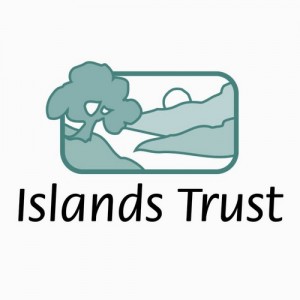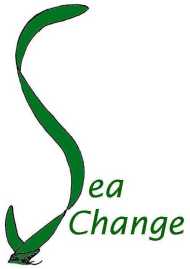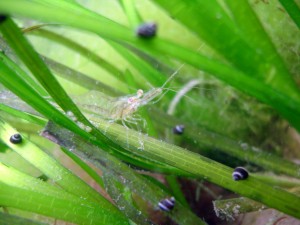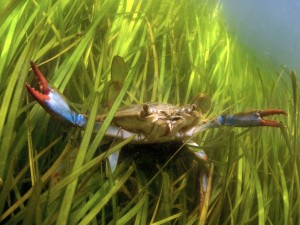WHY DOES IT MATTER?
Before you continue reading, stop and ask yourself what your favourite coastal habitat is. Did you answer mangroves? Coral reefs? Maybe marine mammals came to mind? We hope to enlighten you on the importance of eelgrass in your life. Whether you know it or not, we reap the benefits of eelgrass everyday, and with an ever-growing coastal population threatening eelgrass habitats, we need successful and impactful conservation efforts.
Eelgrass meadows provide important benefits to ecosystems and the species that inhabit them:
- Produce the oxygen that we breath everyday
- Protect our coastlines from erosion
- Filter nutrients and water
- Provide a nursery grounds for fish that lay their eggs on shoots.
- Aid in the fight against climate change! An incredibly important blue carbon sink
Check out the following video made by the Sierra Club BC for more information on just how effective eelgrass is at sequestering carbon:
https://www.youtube.com/watch?v=pLLwZXgrzc4
WHY IT IS DECLINING?
Because of us! Coastal populations on the rise and unfortunately, we are having direct impacts on the health of eelgrass beds:
- Coastal infrastructure blocking sunlight for plants
- Development along shorelines for commercial, residential and agricultural reasons
- Dredging which increases sedimentation and decreases water quality
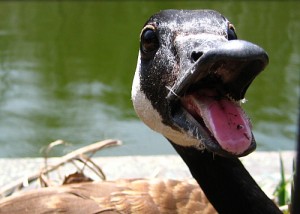
- Nutrient runoffs which promotes algal blooms and decreases water quality
- Physical disturbance due to increased boat traffic
- Animals eating the grass, such as the Canadian Goose
WHAT IS BEING DONE?
In 2012, SeaChange Marine Conservation Society teamed up with other organizations and began mapping islands in the Salish Sea, BC. Listen to Kate Emmings, the ecosystem protection specialist for Islands Trust Fund, speaking in a Coast FM radio show about the importance of careful mapping in determining potential transplant sites:
The coverage of eelgrass located along shallow coastlines was looked at, as well any factors that may influence the health of these eelgrass beds. Eelgrass shoot transplants were taken from nearby native eelgrass beds. Volunteers helped to tie shoots onto metal washers, that served as anchors, which were planted into the seafloor by divers. Action was also taken to remove old logging equipment to ensure the best possible growing conditions. SeaChange is committed to monitoring the planted eelgrass beds for the next 5 years to make sure that the beds continue to succeed.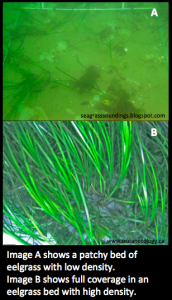
DOES SEACHANGE HAVE A GREEN THUMB?
There are signs of it! After six months, most of the beds appear to be surviving. You can see this improvement in the graph below,
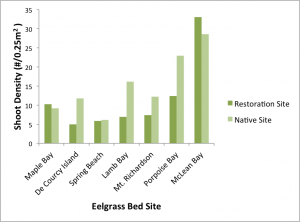
Shoot density of sites six months after 2014 planting by SeaChange for sites with data for planting beds and native beds (Wright 2015).
which shows a positive difference between the restored bed and native bed densities for Maple Bay and McLean Bay. We can call McLean Bay a success! This planted bed has more shoots over the area than the donor bed and has no patchiness throughout! However, not all sites were a success. One of the Cowichan Bay sites planted in 2013 showed poor survival likely due to water quality from a nearby marina. Other challenges included: strong winds, seafloor quality, grazing and disturbances from crabs were other challenges faced. Transplants endured these challenges and survived showing signs of continued success.
SeaChange made it easy for many communities and individuals to get involved with the mapping and restoration efforts. One hundred and sixty-five volunteers were directly involved in planting, including students from Brentwood College’s Environmental Action Team (BEAT). Laura Richardson, the teacher sponsor of BEAT became involved with Nikki Wright, executive director of SeaChange, in 2011. Over the last four years, many students got involved with BEAT as they learned about their connection to eelgrass and its importance. The group submitted their eelgrass project to the BC Green Games, and won first prize for secondary schools for 2015, for eco-storytelling in B.C.’s schools. Here is a video detailing the work of these students on eelgrass:
Did the public’s knowledge, interest or mindfulness of eelgrass ecosystems improve because of public outreach by SeaChange? No clear measurements were used in the project, but it appears that the outreach has affected coastal communities..The media coverage, attendance at public informational campaigns, webinars, volunteering and the relatively large spatial scale of these activities suggests that SeaChange is positively affecting coastal residents. Volunteers directly involved with the project developed a sense of ownership towards these eelgrass ecosystems. However, this feeling of ownership is not transferred to commercial industries and local governments, which can strongly impact these vulnerable habitats.
IS IT WORKING?
Animals from tiny invertebrates the size of your thumb nail, all the way up to grey whales that rival the size of a school bus, benefit from healthy eelgrass habitats. Hopefully by this point, if you hadn’t already realized, the advantages gained by protecting eelgrass is immense. Despite this, many restoration projects do not always succeed. After only six months, two of the sites planted in 2014 already have eelgrass beds with more shoots than their donor beds (Mclean Bay and Maple Bay). Cynthia Durance, scientific advisor to SeaChange, suggests that due to the relatively slow growth, success is generally not seen until 2-3 years after planting. Continued monitoring is essential in the coming years, and seeing that
SeaChange has a 5 year monitoring plan in place is encouraging. With this in mind, we believe the project expresses planting success so far, but does the community awareness share this success?
Communities are there to support each other and their environment so getting the public to embrace the project should always be a goal for conservation organizations. After interviewing community members and people involved with the organization of the project, we believe that individuals directly involved with volunteering benefited the most while governments seem to be dragging their feet. Edith Tobe mentioned that even with giving several presentations to administrators on the importance of eelgrass habitats and why they are being threatened, they still view it as more of a nuisance. BEAT, on the other hand, is a great example of the positive impact the project has had on the youth of the community. The work that they did in Mill Bay with SeaChange was not required from their courses, yet the students still felt the need to help restore and create awareness around these habitats. Despite the small size of communities involved, relatively high volunteer numbers and ownership lead us to conclude that community efforts are a success!
WHAT CAN WE EXPECT FROM SEACHANGE IN THE FUTURE?
Mapping is becoming more efficient with new technology as the Hakai Institute has proved with the use of drones! However, efficiency doesn’t necessarily lead to success, especially in a project such as SeaChange’s where social involvement is critical! One of those areas is in industry where future improvements hope to be made is on the lacklustre effects of this project. Mapping and monitoring results can inform policy makers on the permitting and installation of coastal infrastructure such as docks that may harm eelgrass beds. However, industry appears to care little about the habitats so far. Islands Trust Fund keeps in touch with the ongoing
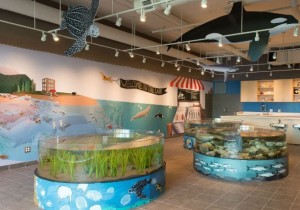
Eelgrass meadows are a focus ecosystem in the new wet lab at the Vancouver Aquarium. Members of the public will be educated on eelgrass importance through school programs and more every year! Photo credit: www.aquablog.ca
restoration work that SeaChange is currently involved with. Future re-mapping of the sites is of interest because historical mapping data has been sparse but measurable changes have been seen when the sites were revisited. Alterations to the planting approaches for future transplants will be made to reduce the impacts of crab disturbance. Instead of washers, at some sites, shoots will be tied to a metal grid in order to exclude crabs and prevent dislodgement. For increased success, eelgrass needs to be understood as the charismatic habitat that it is! Groups such as the Vancouver Aquarium are trying to build this enthusiasm through education and awareness using a model eelgrass ecosystem and identification skills. Coral reefs and mangroves receive people’s attention, so why not eelgrass!
